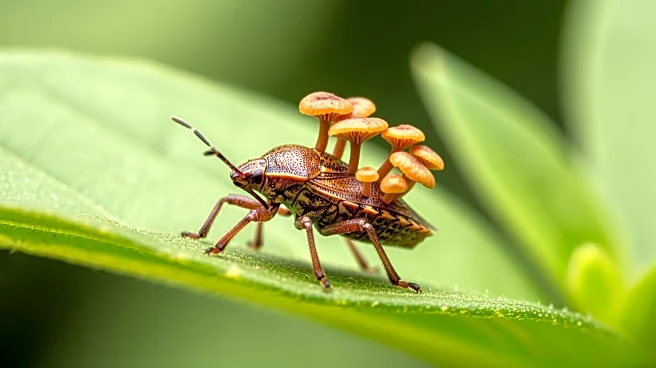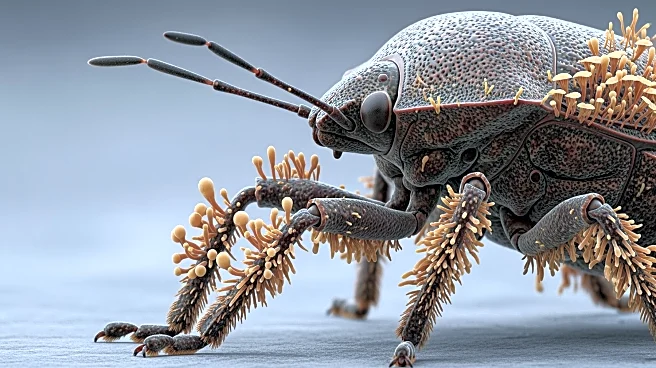What's Happening?
A team of Japanese researchers has uncovered a unique biological feature in the Dinidoridae family of stinkbugs, specifically in the species Megymenum gracilicorne. Previously thought to possess tympanal organs for hearing, these stinkbugs actually carry
mobile fungal gardens on their hind legs. The study, led by Takema Fukatsu from the National Institute of Advanced Industrial Science and Technology in Tokyo, revealed that these organs are not used for hearing but are instead filled with benign filamentous fungi. The discovery was made after researchers found no tympanal membrane or sensory neurons, which are typically associated with hearing organs. Instead, the organs had thousands of small pores connected to secretory cells that provide nutrients for the fungi.
Why It's Important?
This discovery challenges previous assumptions about the biological functions of certain insect organs and highlights the complexity of insect-fungal relationships. The presence of mobile fungal gardens on stinkbugs could have implications for understanding insect ecology and evolution, particularly in how insects interact with their environment and other organisms. This finding may also inspire further research into the potential applications of such symbiotic relationships in biotechnology or agriculture, where fungi play a crucial role in nutrient cycling and pest control.














